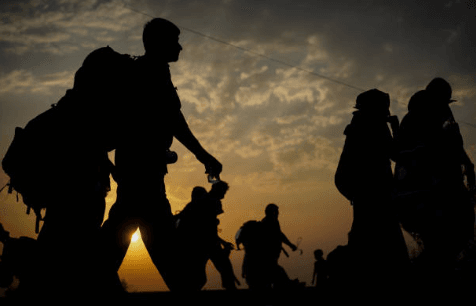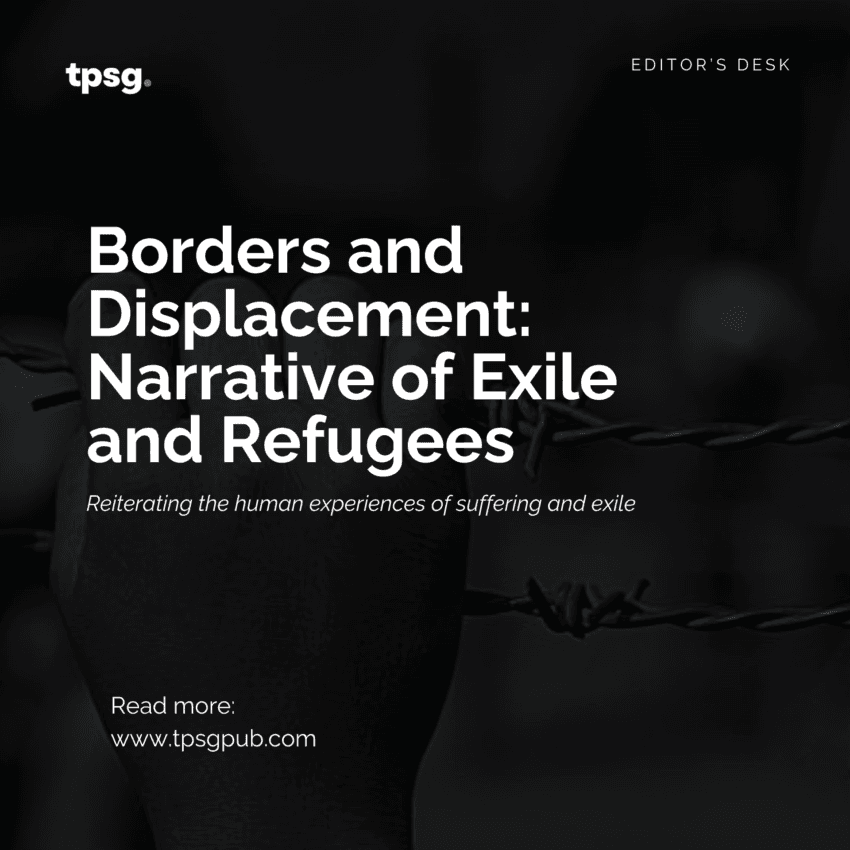Borders do not merely symbolise lines on a map; they are the complexity of identity, culture, and belonging. In most instances of strife and persecution and with natural disasters of every kind, millions have been displaced throughout history, ushering in tales of exile and refugees that so resonate in literature and society. This essay covers the themes of borders and displacement, focusing on the narratives of exile and refugees, with an important literary backdrop against the background of a boundary-crossing struggle and resilience.

Understanding Borders and Displacement
Borders can be a crossing for the control of immigration, trade, and security. It may serve as an obstacle to social ties binding families, communities, and cultures while displacement is the act of leaving one’s land. People are often driven away from their motherland because of war, political instability, and natural calamities. Uprooting someone from their motherland is a traumatic and multi-layered experience comprising loss, uncertainty, and the search for belonging.
Borders are often attached to national and ethnic identity. When people have been forced to flee their homeland, they usually have difficulty defining identity for themselves outside the country. This is where literature comes in as a poignant example of how people explore exiles and refugees in the best possible way.
Examples of Exile/Refugees in Literature
1. The Kite Runner by Khaled Hosseini
Perhaps one of the most heartbreaking accounts of exile lies in the book “The Kite Runner” by Khaled Hosseini. The novel is a story of the life of a young lad from Kabul named Amir whose friendship with Hassan, the son of his father’s servant, gets destroyed because of the destruction of the social-political balance in Afghanistan. These themes-the burden of guilt and that of redemption- capture the tragic implications of war on personal relationships.
This is captured in Amir’s flight from Afghanistan to the United States as a refugee-often laden with love and regret, the memories of his homeland come to haunt him. Inner conflicts mirror the external struggles that refugees face along the borders of the country that separate him from his past. This novel illustrates the breaking up of identities in displacement as people are driven into other cultures but also carry the burdens of their histories.

2. “The Book of Disappearance” by Ibtisam Azem
The book “The Book of Disappearance” by Ibtisam Azem offers an innovative look at the Palestinian experience in this portrayal of a process of displacement. The novel explores the theme of absence because it is a telling of the sudden disappearance of Palestinians from the city of Jaffa. This kind of narration, furthermore, speaks to the complexities of identity and belonging in a context in which borders are not only political but also profoundly personal.
The story reflects the disorienting experience of erasure from one’s homeland, becoming once again a poignant reminder of how borders render a person invisible. Azem’s work exemplifies the psychological implications of displacement where characters struggle within a changed landscape brought about by war. The narrative powerfully speaks to the plight of Palestinian refugees and the far-reaching effects of displacement.
The Psychological Effects of Displacement
In the tales of exile and refugees, much of what has been explored psychologically is what it means to be displaced. Leaving home could be traumatic and lead one to lose identity or a loss of whatever sense of belonging there was. Literature mirrors the stories behind migrations by reflecting on them and getting people in touch with their feelings concerning the suffering of victims behind borders.
In addition to this, memories play a significant role in the exiles’ stories. Most authors illustrate how memories of homes influence the identity of the displaced where yearning for something familiar forms strength in an aim for reclaiming stories and a place to belong in unfamiliar places. In one’s story, a way of articulating the experience of having been a refugee transforms trauma into resilience.
To conclude, one may assert that every history testifies to resilience and hope, reminding everyone of shared moments beyond borders. In this world where the realities of displacement continue to unravel, literature is still needed for these moments of understanding as well as for empathising with the exiled and the refugees, creating an aura of global solidarity and compassion.




